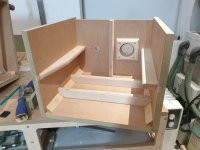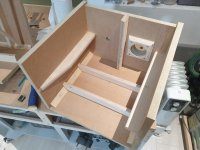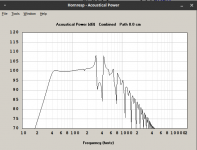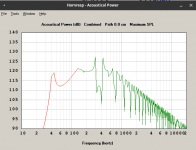Insult, then claim you're not. Smells of something...That being said, non-logical approach seems to be standard for some people here.
That is a fully general statement, not pointed at anyone here in particular at all nor the person I just replied to!
I have no idea what you're even talking about or even trying to say?Insult, then claim you're not. Smells of something...
I was never intended as an insult, just an observation.
Personally, if we are gonna nitpick how certain things are being said, I find quite a lot what people claim very insulting.
Not even just personally, but for those people who spend and awful lot of time writing everything down to be used as referenced literature.
Last edited:
Are the side mounted plywood planks downsized braces?
Yes! The price of birch ply has almost doubled here in the last year and the design in mind has no exposed wood other than the baffle so I thought I'd use the MR MDF I have already. It is really rigid. Every panel attaches to every adjacent panel on more than one plane. The theory is pushing the resonant frequency of any unbraced area way above the passband.
Attachments
Drivers were delivered a few weeks back and after 6 hours of wubwubwubwubwub here are my measured TS parameters.

I let the drivers calm down for a couple of hours before testing and have used the averaged data for simulation.
I let the drivers calm down for a couple of hours before testing and have used the averaged data for simulation.
Last edited:
Isn't weird that Le is almost half? I would gather that a physical pat like a coil value would be predictable...Drivers were delivered a few weeks back and after 6 hours of wubwubwubwubwub here are my measured TS parameters.
View attachment 1009810
I let the drivers calm down for a couple of hours before testing and have used the averaged data for simulation.
Le can be a weird one to measure. The coil itself has inductance, but the moving parts add to the equation. I don't find it particularly relevant unless it's an indicator for a low-tech motor without any demodulation etc.
For a passive crossover, we'll measure the drivers in cabinets anyway, so there's not much need to consider Le specifically.
For an active crossover, so long as the cable lengths are sensible (ie, we're not going to end up with >0.5ohm of driving impedance), the impedance curve of the driver isn't of much concern, so long as it stays in an area where the amplifier is happy.
Chris
For a passive crossover, we'll measure the drivers in cabinets anyway, so there's not much need to consider Le specifically.
For an active crossover, so long as the cable lengths are sensible (ie, we're not going to end up with >0.5ohm of driving impedance), the impedance curve of the driver isn't of much concern, so long as it stays in an area where the amplifier is happy.
Chris
Interesting that I came across this post today just after receiving an email from parts express for a new 10" driver. Not great for organ music but might be really nice for classic rock. 150cm TL.
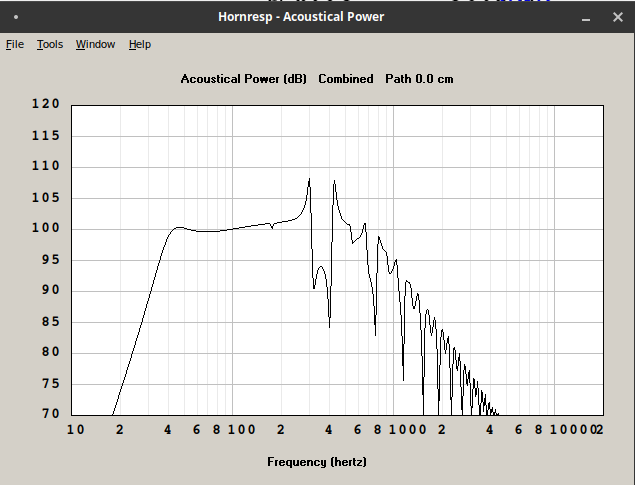

Attachments
Last edited:
Doh, I had a brain seizure! I didn't think about moving parts. However, the signal when measuring is not so strong and at a certain frequency, 1kHz?Le can be a weird one to measure. The coil itself has inductance, but the moving parts add to the equation. I don't find it particularly relevant unless it's an indicator for a low-tech motor without any demodulation etc.
For a passive crossover, we'll measure the drivers in cabinets anyway, so there's not much need to consider Le specifically.
For an active crossover, so long as the cable lengths are sensible (ie, we're not going to end up with >0.5ohm of driving impedance), the impedance curve of the driver isn't of much concern, so long as it stays in an area where the amplifier is happy.
Chris
FWIW, my thoughts on dealing with inductance (Le): https://www.diyaudio.com/community/threads/zobel-calcs-making-me-crazy.54349/post-607076
Thanks GM and Chris, I'm not sure I got any wiser, but in my case, I was just curious of the deviation. I use only active filtering today so...FWIW, my thoughts on dealing with inductance (Le): https://www.diyaudio.com/community/threads/zobel-calcs-making-me-crazy.54349/post-607076
@ Graham, sorry for the OT, looking forward to see your end result!
Adding 2mm butyl damping. This is the most boringest task in ever. Not entirely convinced of it as it feels like snake oil but physics argues to the contrary. Certainly has added a lot of weight!
The inside of the cabinet had two coats of water based clear beforehand.

The inside of the cabinet had two coats of water based clear beforehand.
Baffles is done with 12mm MR MDF and 18mm birch ply. The largerinner dowels to the driver aperture have 10x6mm N52 magnets driven as close to the front of the baffle as I dared for later grilles. My chamfering cutter wasn't tall enbough to get as deep a chafer as I'd like but there is a 6mm flange on the driver so there is only a little jump of about 4mm before the chamfer.
I've always been a bit worried about glueing a plywoof as a baffle as only the top veneer holds it on. Now the MR MDF sub-baffle has been dowelled on to the main baffle there will be more points of contact for the glue - the birch ply veneer and the sides of the sub baffle which have been mechanically bonded. Does this make all that much difference? Yes, I sleep ever so slightly better.

I've always been a bit worried about glueing a plywoof as a baffle as only the top veneer holds it on. Now the MR MDF sub-baffle has been dowelled on to the main baffle there will be more points of contact for the glue - the birch ply veneer and the sides of the sub baffle which have been mechanically bonded. Does this make all that much difference? Yes, I sleep ever so slightly better.
I've always been a bit worried about glueing a plywoof as a baffle as only the top veneer holds it on.
This is where the need for true NO VOID BB, etc., plywood in speaker construction comes into play, i.e. it's all bonded together under pressure with the appropriate adhesive to form a near enough single thick panel. 😉
I've had BB scrap panels outside in Wisconsin weather for many years without any delamination. They do a 300degree+ boil test on the adhesive/panels. I wouldn't worry about them failing.
Just neurosis on my part 🙂
Cheers man, how are you getting on with yours?Very nice construction. Lots of thought and elbow sweat.
- Home
- Loudspeakers
- Multi-Way
- 10" + CD/Horn 2-Way
